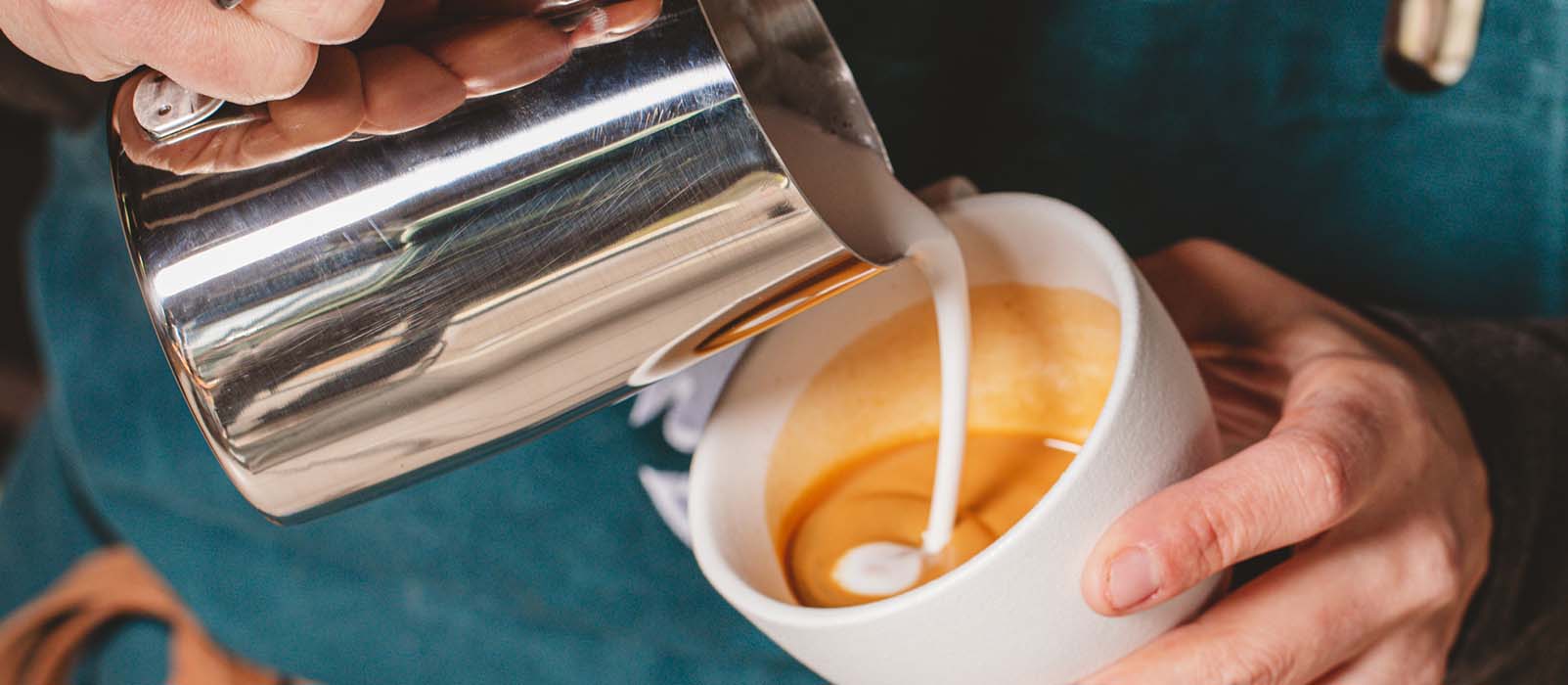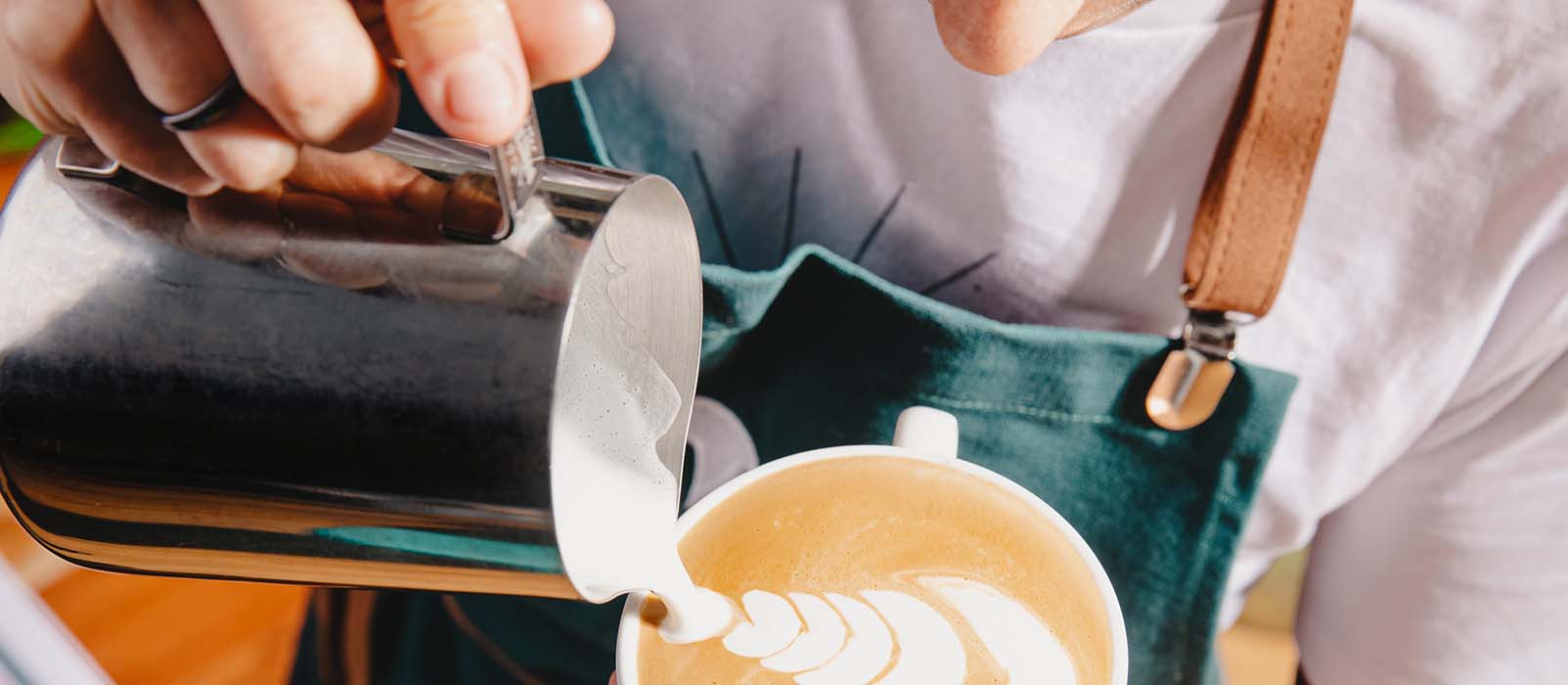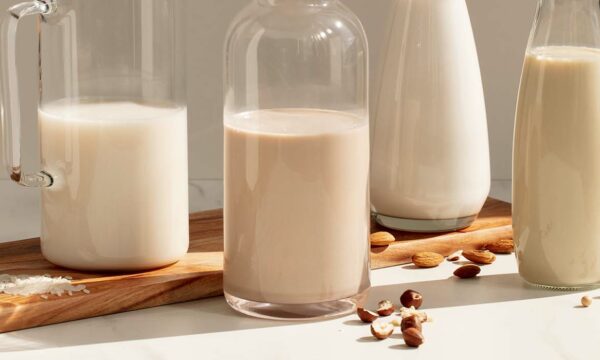
- Home
- How to choose the best Milk Jug ?

How to choose the best Milk Jug ?
Written by Jigisha
Reading time 9 minMilk is an essential ingredient for any milk-based coffee preparation, such as cappuccinos or latte macchiatos. However, it’s not enough to just choose the best cow’s milk or plant-based milk to prepare your perfect drink! You also need to use the right kitchen tools to froth your milk to perfection, such as the Milk Jug. Here are our tips for choosing the best Milk Pitcher for you.
Why use a Milk Jug?
A Milk Jug, or Milk Pitcher is an essential tool for frothing your milk quickly and efficiently.
In fact, the special feature of a Milk Jug, most often made from stainless steel, is its thermal insulation, which allows the milk to heat up faster while preventing it from cooling down too quickly, once the foam has been created.
A high-quality milk frothing pitcher is also an indispensable accessory for mastering latte art patterns. In addition to controlling the milk’s temperature, the Milk Pitcher helps in creating intricate designs thanks to the precision of its spout.
What are the different types of Milk Jugs?
You’ll find a wide variety of Milk Pitchers with different sizes, designs, and spout shapes. It’s easy to find one that suits you by considering various criteria to choose the best Milk Jug for your needs.
However, it’s important to note that there are two main types of Milk Pitchers: the Motta-style pitcher and classic pitchers.
The Motta Milk Jug
The Motta Milk Jug is recommended for beginners as it’s ideal for learning how to steam and froth milk thanks to its rounded shape. However, it lacks precision due to the short spout and open handle design.
The Classic Milk Pitcher
If you seek more precision and flexibility, choose a classic Milk Pitcher. Its flared shape allows for optimal milk frothing, while the narrow spout enables greater precision when pouring. Finally, the closed handle provides more control and freedom for better maneuverability when creating latte art patterns.
MaxiCoffee’s tips
Plan for the number of drinks you want to make at the same time (1 jug for 1 drink, 2 jugs for 2 drinks or 2 latte art designs).
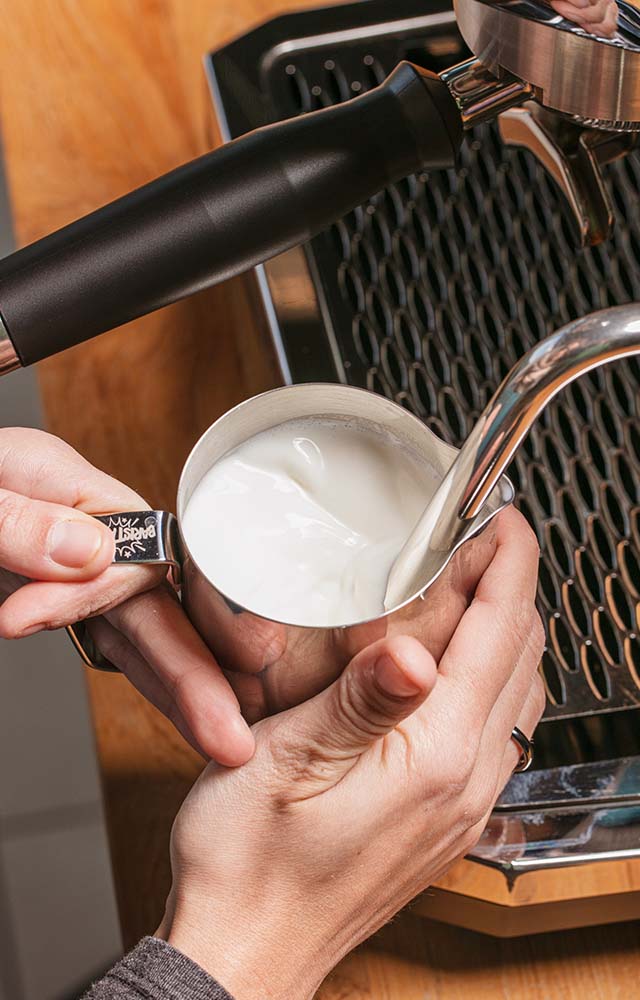
What size Milk Pitcher for latte art?
Now that you know how many frothing jugs you need, the size of your picher(s) is another important factor.
There are different sizes of Milk Jugs. However, those intended for frothing milk generally range from 300 ml to 750 ml.
Outside of this range, a pitcher that’s too small will make it difficult to froth your milk properly. Likewise, a pitcher that’s too large will result in wasted milk and prevent you from achieving a good foam.
Bear in mind that when frothing milk, it doubles in volume as it foams. Therefore, don’t choose an insulated pitcher that’s the same size as the amount of milk you initially plan to use. In general, it’s recommended to choose a Milk Jug that’s about 2 to 3 times the size of your cup.
Finding the right pitcher size
To quickly determine if your Milk Pitcher is suitable for the amount of milk you need to froth, observe where the milk reaches inside. Ideally, the milk should come just below the spout mark, which is approximately one-third of the height of the Milk Jug.
If the milk exceeds this level, it will overflow during frothing, and if underfilled, the steam wand cannot be properly submerged. Additionally, selecting the right size milk frother is key to achieving that perfect micro foam, which is essential for creating latte art patterns.
For those preparing just one drink and wishing to avoid milk waste, we recommend choosing a smaller stainless steel Milk Pitcher, around 35 cl. If you plan to make two beverages or practice more intricate latte art designs, consider varying the sizes of your pitchers. A medium-sized jug (60 cl) for frothing and a smaller one (35 cl) for blending can provide the flexibility you need.
Remember, a high-quality milk frothing pitcher made from high-quality stainless steel or featuring a Teflon coating will help ensure durability and ease of cleaning. Brands like Motta Milk Jugs are popular for their balance between the flow of milk and the control needed for creating fine lines and intricate designs in your coffee.
Moreover, the type of drinks you wish to prepare with your Milk Mitcher is also an important factor to consider.
If you’re only making cappuccinos, you can opt for smaller pitchers than if you’re also planning to make latte macchiatos, which contain more milk.
What design do you prefer?
The third criterion is design. You can use your insulated pitcher as a decorative element thanks to its modern and elegant design, regardless of the model you choose.
You’ll find milk pitchers in different colors: stainless steel, copper, black, or even yellow.
What type of handle do you prefer?
However, keep in mind that your milk pitcher should first and foremost remain comfortable to handle when frothing with the steam wand and pouring your milk into the coffee. For this, the handle is a crucial factor.
There are two types: open or closed. The shape of the handle allows for an ideal grip and precise control, whether you’re creating a latte art design or simply aiming to pour without spilling the milk. You can choose the one that suits you best and offers the greatest maneuverability, facilitating wrist movements.
What kind of milk jug is best for latte art?
For latte art enthusiasts, choosing the right spout shape is an important step. Whether rounded, pointed, or square, the type of spout will impact the difficulty of creating your designs.
A classic spout will be rounded and fairly short, making it perfect for beginners. This allows you to pour your milk consistently and without splashing.
If you’re more experienced, opt for a pointed spout, which enables you to produce fine, precise lines for intricate latte art details. This spout type allows you to work on more complex designs, like a rosetta or a swan.
What material should you choose for an insulated milk jug?
The best material, and the one most commonly used by baristas, is stainless steel. You can find some models with a Teflon interior coating, which prevents milk from sticking to the sides and makes cleaning easier.
A stainless steel milk pitcher has the advantage of retaining heat, as stainless steel withstands high temperatures. Moreover, it’s easy to clean and dishwasher safe. If you prefer a handle-free pitcher, a Teflon coating is a better option to avoid burns.
What pitcher shape is best for creating milk froth?
The milk pitcher is primarily used to create a special texture for latte art. The microfoam is ideal for creating any design on the surface of your coffee. Microfoam is finely textured milk that gives a glossy finish to the surface, similar to wet paint.
The technique to achieve this specific foam involves creating a whirlpool in the milk using the steam wand, which breaks down the milk bubbles while increasing its temperature.
Thus, the milk pitcher should be wide enough to allow room for a vortex. If the pitcher is too narrow, the milk won’t have enough space to swirl, leading to uneven aeration.
Milk Jug Comparison: Find the best barista Milk Pitcher for you
Milk Jug – Delonghi DLSC060 (35 cl)
The Delonghi DLSC060 stainless steel Milk Jug, with its 350ml capacity, is an excellent choice for home baristas or those brewing smaller milk-based drinks. Its compact size makes it perfect for creating just enough microfoam for a single cappuccino or latte.
The ergonomic handle offers a comfortable grip, while the spout is designed for precision, making it easier to pour delicate latte art designs.
This jug is particularly suited for beginners due to its user-friendly size and straightforward design, though more advanced baristas might prefer a larger pitcher for more complex pours.
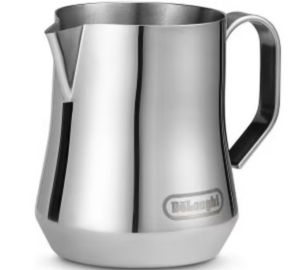
Milk Jug – DLSC060 – Delonghi (35 cl)
Presenting the Delonghi stainless steel milk jug. It’s ideal for serving 35 cl of your favorite milk.
See the productMilk Jug – Sage The Temp Control (48 cl)
The Sage Temp Control Milk Jug is designed for baristas looking to perfect their milk steaming technique with temperature precision. This stainless steel jug includes an integrated thermometer strip, allowing for real-time temperature monitoring, which is crucial for achieving the perfect microfoam consistency.
Its large capacity is well-suited for professional or more advanced baristas who need to steam larger volumes of milk for multiple drinks at once. While the spout is relatively wide, which may require some practice for intricate latte art, the durable construction and temperature control features make it a top choice for those serious about improving their skills.
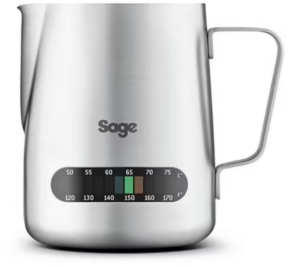
Milk Jug – The Temp Control – Sage (48 cl)
Check out the Sage Temp Control Stainless Steel milk jug, designed to hold 48 cl of milk for your perfect coffee creations
See the productMilk Jug – Bialetti Elegance (75 cl)
The Bialetti Elegance Milk Jug is a high-capacity stainless steel jug, ideal for those who frequently make multiple milk-based drinks.
Its sleek, stylish design matches Bialetti’s renowned craftsmanship, while its 750ml capacity makes it great for entertaining or serving larger groups.
The wide spout allows for generous milk pouring, but might not provide the precision needed for advanced latte art. However, its comfortable handle and durable build make it a reliable option for both beginner and more experienced baristas looking to steam milk for several drinks in one go.

Milk Jug – Elegance – Bialetti (75 cl)
Discover the Bialetti Elegance in Stainless Steel milk jug, featuring a generous capacity of 75 cl for all your milk needs.
See the productMilk Jug – Baristator (60 cl)
The stainless steel Milk Pitcher from Baristator can hold up to 600 ml of milk. This pitcher is perfect for beginners in mastering milk frothing.
This Baristator Milk Pitcher is perfect for beginners, thanks to its excellent quality-to-price ratio and its flared shape, ideal for practicing milk frothing. Additionally, once the microfoam is formed, its precise spout will assist you in creating designs on the surface of your coffee. Even the most complex patterns will be within reach!

Milk Jug – Stainless Steel – Baristator (60 cl)
Introducing the Baristator Milk Jug in Stainless Steel, offering a practical 60 cl capacity for all your milk frothing and serving needs.
See the productMilk Jug – Rhino Coffee Gear Classic Milk Jug (36 cl)
The Rhino Coffee Gear Classic Milk Jug, with its 360ml (12oz) capacity, is a versatile and durable choice for both beginner and experienced baristas. Its compact size is perfect for steaming milk for single servings, such as a cappuccino or flat white, while the sturdy stainless steel construction ensures long-lasting performance.
The jug features a well-balanced handle for comfortable use, and its narrow spout allows for excellent control when pouring latte art, making it suitable for baristas looking to practice intricate designs.
Its solid construction and ergonomic design make this pitcher a reliable tool for both home and professional settings.

Milk Jug – Classic – Rhino Coffee Gear (36 cl)
Meet the Baristator Classic Stainless Steel milk jug, designed with a 60 cl capacity to elevate your coffee experience.
See the productNow that you know the main characteristics of the different Milk Pitchers, the best way to determine which one suits you is by testing it during your practice sessions. So, whether you’re a beginner or an expert in latte art, all that’s left is for you to make your choice!
Discover our other articles



